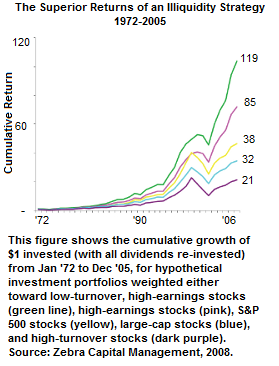The financial crisis exposed the weaknesses of 401(k) plans and sparked criticism that the employer-based defined contribution (DC) savings system is too expensive, too risky, and leaves too many Americans unprepared for retirement.
In response, the major 401(k) service providers—including several close competitors—have started a Washington-based trade organization to conduct research, promote their agenda and, specifically, to make DC plans more like defined benefit (DB) plans.
The Defined Contribution Institutional Investment Association, or DCIIA, unveiled itself earlier this month, in time to respond to a Labor Department request-for-information on income options in 401(k) plans. “We have consistently heard that now is the time to influence the public policy debate,” the group says in its statement of core beliefs.
Big insurers and investment firms like MetLife, New York Life, Goldman Sachs, PIMCO, AllianceBernstein and others have chipped in $15,000 each to belong to the DCIIA. Consulting firms like Hewitt, Mercer and Ibbotson have paid $3,500 a piece. Plan sponsors can join for only $1,000. The group has about 40 members so far. It will hold its first policy forum May 11 in Washington, D.C.
Stacy Schaus, the leader of the DC practice at PIMCO, the giant bond manager, and the DCIIA’s chair, told RIJ, “We’re looking at defined contribution asset management through a defined benefit lens. We’re asking, ‘How do we increase the likelihood that participants will meet their income goals?’ There are people who are saying that DC plans should be taken away altogether, so making these plans better is in our best interest.”
Advertisement
“Our general consensus is that there are a lot of real positives in the defined contribution system, but that there are ways to build it and refine it,” added Lew Minsky, the DCIIA’s executive director. “We felt strongly that we can improve the investments in defined contribution plans by using institutional approaches. There’s no reason why large DC plans can’t look a lot like DB plans. For instance, the returns are better in DB plans and we want to close that gap.”
“DB-ization” of DC
In dedicating itself to the “DB-ization” of DC plans, the DCIIA intends to bring more of the investment practices and possibly the annuitization options of DB plans to 401(k) plans. DB plans, on average, are said to earn about one percent more per year than defined contribution plans—though it’s hard to imagine an apples-to-apples comparison.
That means greater use of collective trusts as a cheaper alternative to mutual funds, customized as opposed to off-the-rack target date funds, and “deemed IRAs” that keep employees’ assets in the plan even after the employees leave the company or retires.
A big part of the DCIIA’s mission is to lower the costs of 401(k) plans and make the fees more transparent. Collective trusts, or commingled funds, are one way to cut costs. Because they are not marketed to the public or filed with the Securities and Exchange Commission, collective trusts are about 25 basis points cheaper than mutual funds—but not necessarily more transparent. (See our news story in this issue, “Target-Date CTFs: The Next DC Gold Rush?”)
“About half of the defined contribution money is in mutual funds. But instead of mutual funds you could have custom funds or collective trusts or target date funds that are set up as collective trusts. Depending on the structure you hold the fund in, you can make it cheaper for the participant,” said Jody Strakosch, national director of Institutional Income Annuities at MetLife and a member of the DCIIA’s retirement income committee.
The group promotes the tools made possible by the Pension Protection Act of 2006, including default enrollment of participants, qualified default investment options, managed accounts, and default escalation of contributions. It is also expected to discuss strategies for protecting participants from the kind of volatility they experienced in 2008 and 2009.
“Certainly the defined contribution community as a whole is talking about whether there are methods to manage the volatility in DC plans,” said David Wray, president of the Profit-Sharing Council of America, an association of plan sponsors.
Custom TDFs and “Deemed” IRAs
Wider use of stable value funds might be one response to volatility. Another might be the expansion of customized target date funds to a broader audience. About one-third of DC plans with over $1 billion in assets now use bespoke TDFs, but smaller plans are said to face hurdles in using them.
“We know that more companies are managing their own target date strategies,” said Schaus. “Instead using off-the-shelf target date funds, more plan sponsors are opting for target date strategies that are plan-specific and whose holdings could be managed more actively.
“You could have someone determining how much money goes into the different asset classes or you can add asset classes to the menu. It would happen automatically behind the scenes so you don’t have to ask participants every step of the way,” she added.
DCIIA members also expected the latest behavioral finance tools in DC plans, like defaults, to expand coverage and increase account balances. “There’s a lot you can do with defaults and nudges that don’t take away the participant’s autonomy but lead to better outcomes. We want to create a system where the default is success and not failure,” said Minsky.
Deemed IRAs are another interest of the group. Also nicknamed “sidecar” IRAs, these are in-plan IRAs where former or retired employees can continue to benefit from the low costs of their plan while getting the flexibility of an IRA, including the ability to buy an institutionally-priced income annuity with part of their savings. Hueler Companies, which offers institutionally-priced income annuities to 401(k) plans through a web-based platform, is a DCIIA member.
Asset retention, always a priority for investment managers, is getting popular with plan sponsors, and deemed IRAs serve that strategy. More plan sponsors than in the past want to keep former employees’ money in the plan, Schaus said. It helps them maintain their economies of scale.
“There’s a conversation in the plan sponsor community about keeping money in the plan,” said David Wray. “As people reach retirement age, they’ll have higher balances. If they take their money out of the plan, it changes the demographics and reduces the sponsor’s ability to pay for the plan. Larger companies especially feel that people should stay in the plan, where the economies of scale are greater and the fees are lower.”
The DCIIA’s executive committee includes:
- Stacy Schaus, PIMCO, Chair
- Toni Brown, Mercer, Vice Chair and Secretary
- Jim Sia, Wellington, 2nd Vice Chair and Treasurer
- Kevin Vandolder, EnnisKnupp, At-large Executive Committee Member
- Ross Bremen, NEPC, Public Policy & Legal Committee
- Drew Carrington, UBS, Retirement Income Committee
- Richard Davies, AllianceBernstein, Investment Policy & Design Committee
- Mary Beth Glotzbach, Morningstar, Governance, Benchmarking & Communications Committee
- Lori Lucas, Callan, Research & Surveys Committee
- Laurie Nordquist, Wells Fargo, Trust & Recordkeeping Committee
- Lew Minsky, DCIIA, Executive Director
© 2010 RIJ Publishing. All rights reserved.




 Siegel, who edited his organization’s new book, “Insights into the Global Financial Crisis,” defined a black turkey as “an event that is entirely consistent with past data but that no one thought would happen.”
Siegel, who edited his organization’s new book, “Insights into the Global Financial Crisis,” defined a black turkey as “an event that is entirely consistent with past data but that no one thought would happen.”




